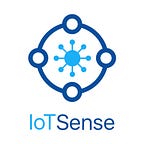Just like numerous other aspects of the economy, the burgeoning trend towards IoT is currently having a profound impact on logistics as well. The combination of analytics, cloud services and mobile computing, all of which are linked with IoT in some way has helped propel logistic services forward.
Asset Tracking
One of the biggest trends that has resulted in Supply Chain Management due to the introduction of IoT is flawless asset tracking. Companies can actually save time and money by implementing asset tracking methods that are based on the technology brought forward by IoT. Numerous delivery companies including estimated that the use of IoT technology in tracking could initiate cost savings amounting up to $1.9 trillion in the logistics sector.
This change is already underway as more than 70 per cent of all manufacturing companies have jumped on the digital transformation project when it comes to their supply chain management. Companies are willing to outsource their delivery setup because other organizations that implement IoT methods provide more feasibility to this cause. Some of these trackers include:
- Internet Connected Trackers: These trackers use low power wide area networks to help companies locate specific items when they are in their journey. Satellite trackers fall in the same vein, and can help send data of an item from almost anywhere across the planet.
- Bluetooth Tags: These tags offer tracking data in a more confined, smaller area. Companies have started using them within the store to monitor customer interest on the products.
- NFC: NFC or near field communication tags allow workers to monitor the tags through their mobile devices. This is an advantage over other forms as the results are real time and spontaneous.
Fleet Management
Companies are starting to use connected solutions for fleet management to make whole process more aligned with IoT and eventually more efficient. Much like inventory management and asset tracking, these methods also implement solutions that use GPS. It has been estimated through a research conducted by Business Insider that the number of vehicles using connected fleet management will be around 180 million in North America by 2020. This would be almost 90 per cent of the whole market and roughly tenfold more than what we had back in 2010. This use of IoT governs the following three solutions in fleet management:
- Physical Asset Transportation and Delivery: For transporting goods for business orders.
- Consumer Transportation: For government and business vehicle transporting people.
- Field Service Vehicles: These include vehicles operated by businesses for employee transportation.
All aspects related to the supply chain management process including storage have benefited from this change. The future is bright for the industry as major giants grasp the concept for IoT.
